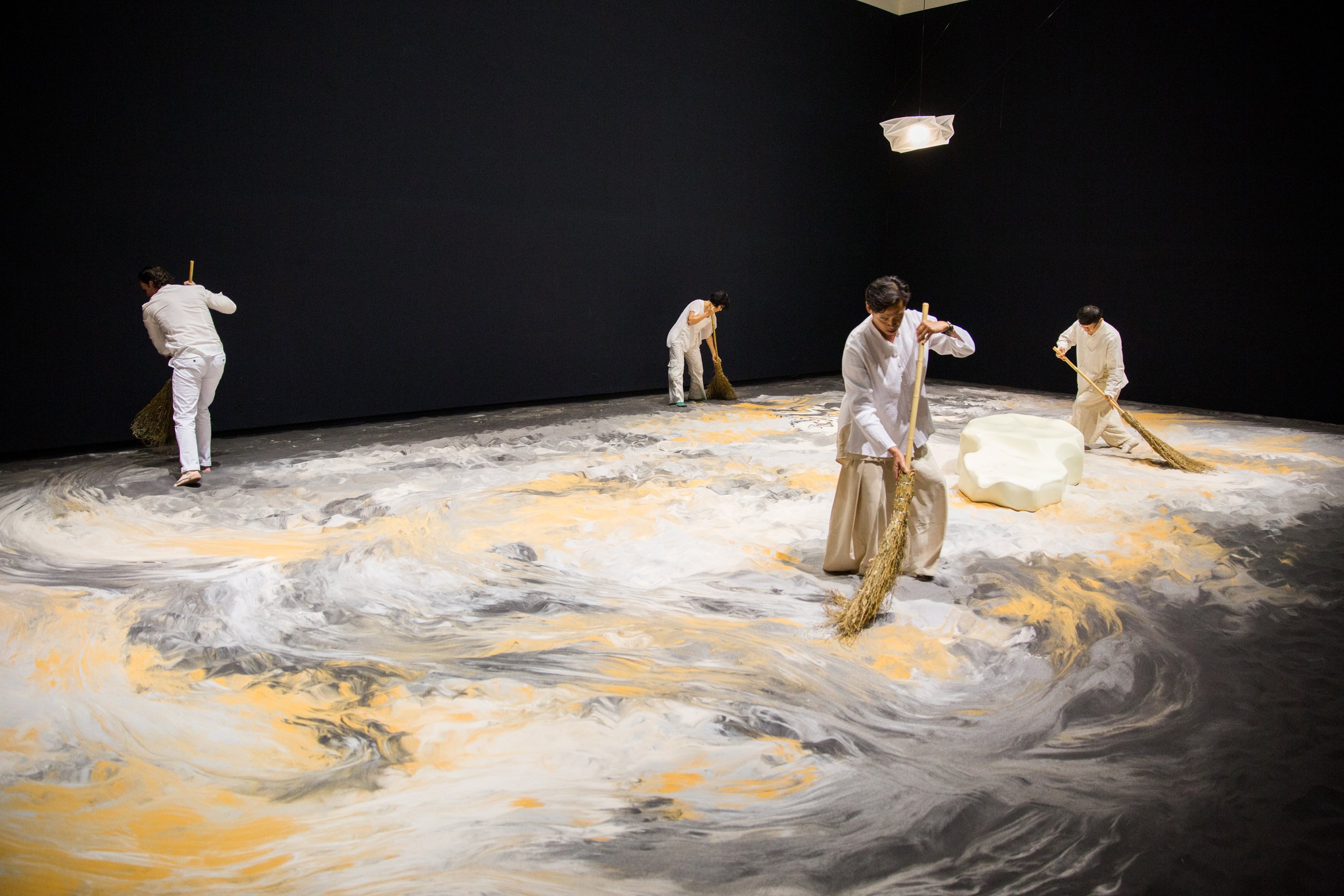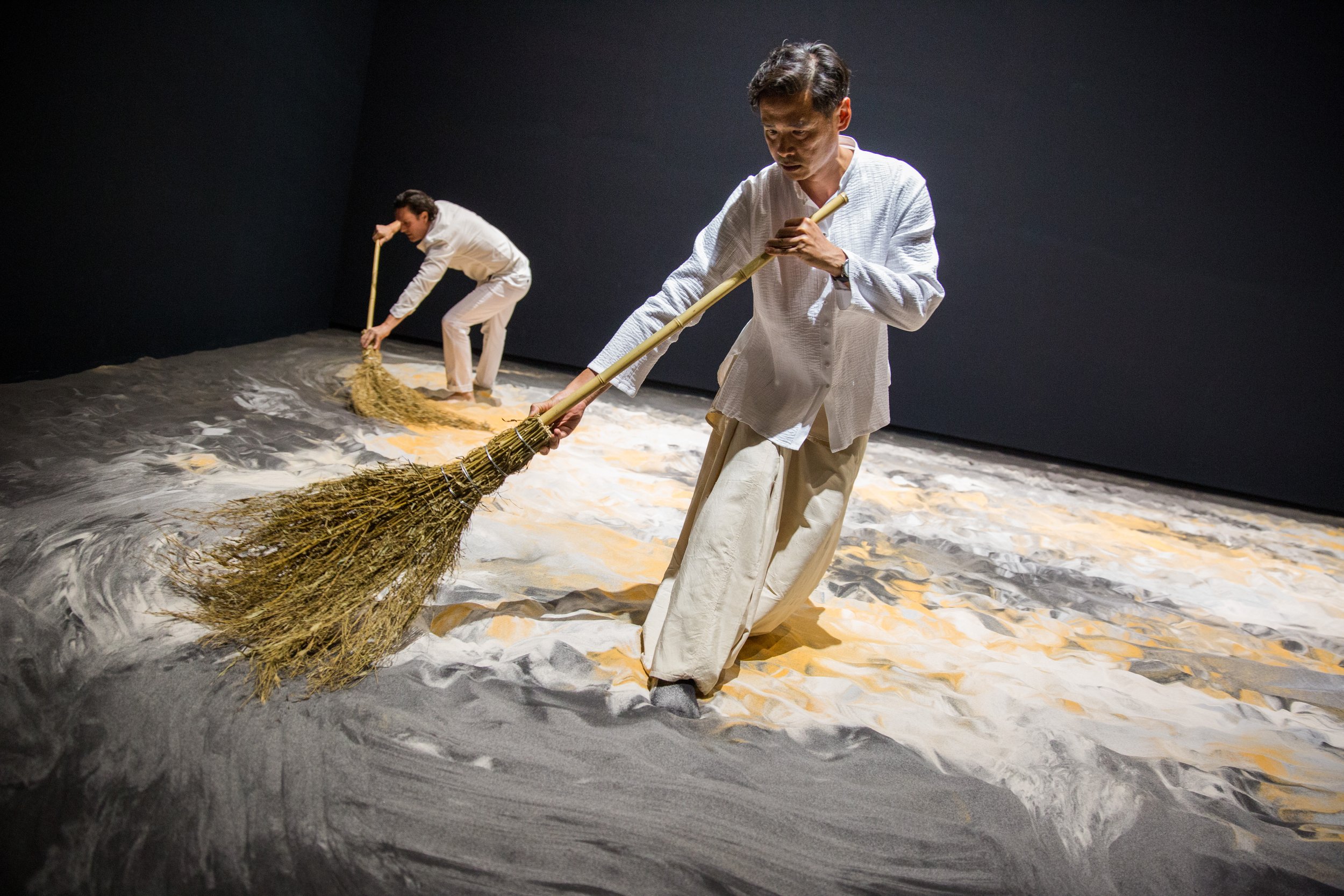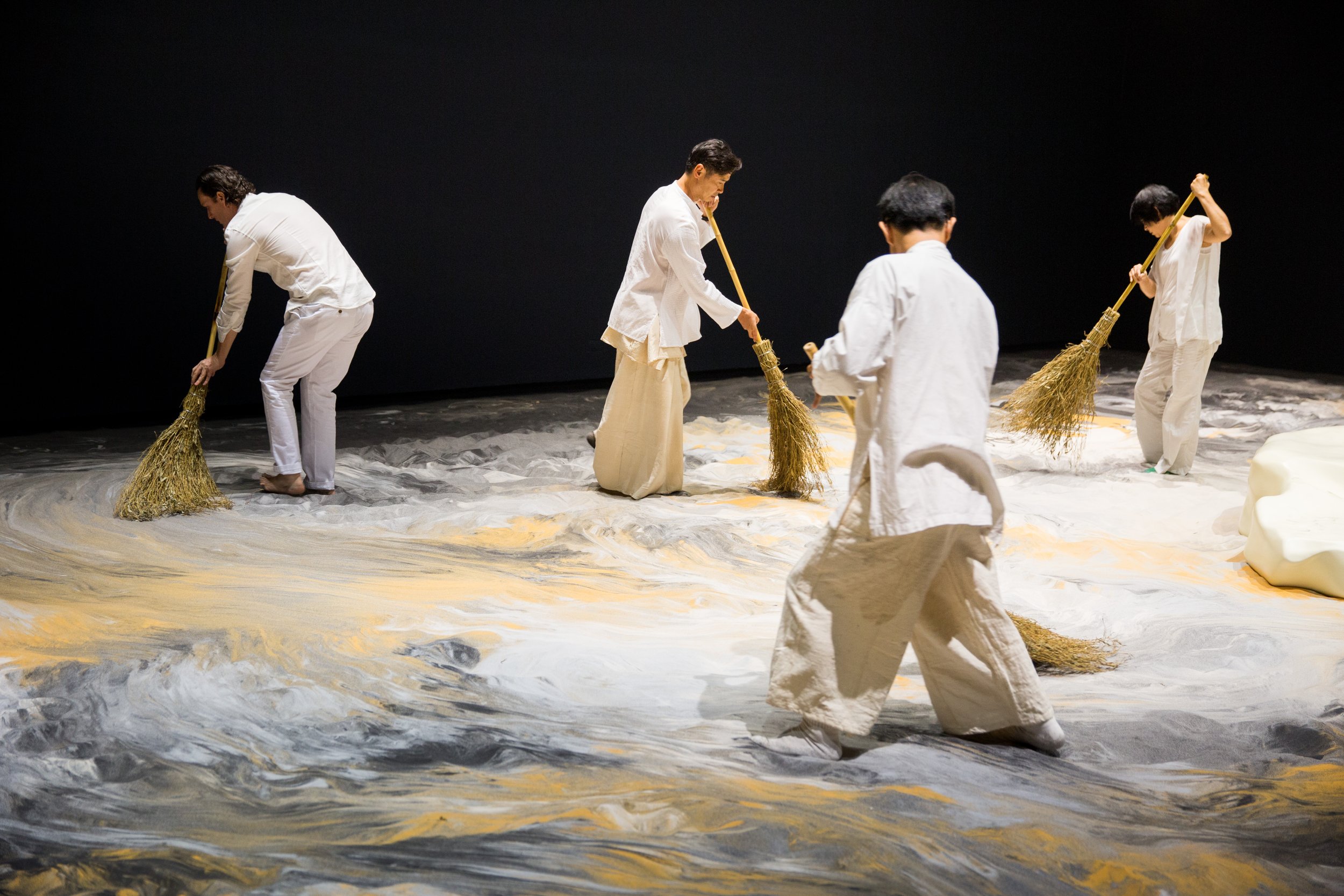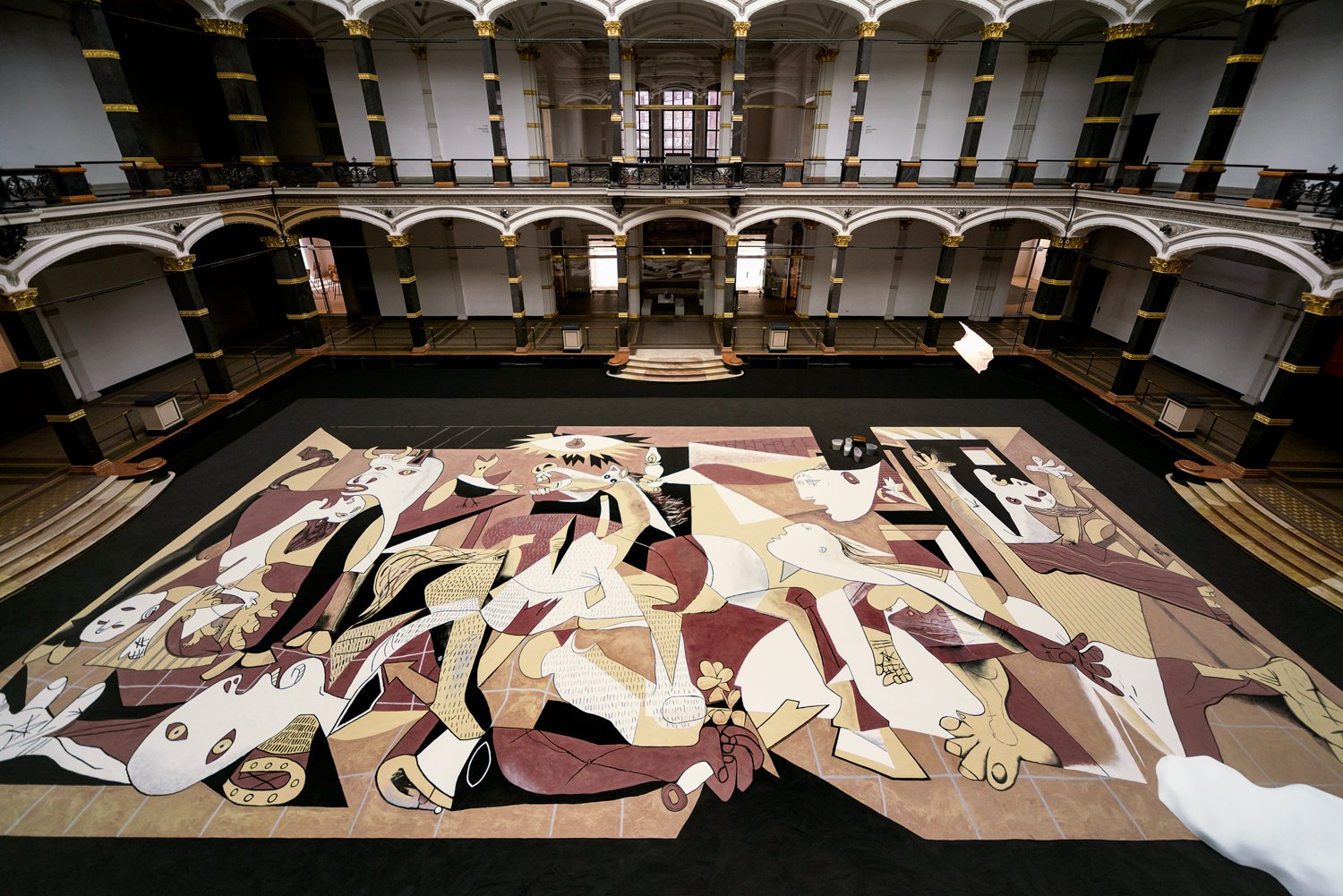Lee Mingwei: Rituals of Care
Our Peaceable Kingdom, 2020–present 40 framed paintings, each 17 3/8 x 23 5/8 in. (44 x 60 cm), easels TKR Installation dimensions variable
Courtesy of Lee Studio Photo Courtesy of Gropius Bau, photo by Laura Fiorio
Inspired by personal experiences and world events, Lee Mingwei (b. 1964) creates interactive installations and performances. Asking how art can encourage social connection and healing in a time of so much trauma and loss, the exhibition features projects made between 1995 and 2024 that place the visitor at the center of radical acts of generosity and care. The Letter Writing Project (1998–present) invites visitors to sit and write a letter they have always meant to send but never did. Guernica in Sand (2006–present), a temporary reinterpretation of Picasso’s famous painting in sand that is then erased, meditates on the cyclical nature of creation and destruction. Transforming ordinary actions like writing, sweeping, mending, or breathing into rituals of care, Lee Mingwei’s works encourage us to find beauty and solace in the small acts that define everyday life.
In-depth
Conceived in 1995 as part of Lee Mingwei’s graduate school application, 100 Days with Lily anticipated several themes of his practice since: the creation of interactive experiences that encourage social connection and care. Five photographs of the artist engaged in mundane activities with a planted lily are overlaid with 100 lines of text, 20 per photograph, describing how he incorporated the flower into his daily routine as a memorial for his maternal grandmother.
The Letter Writing Project, 1998-present Mixed media interactive installation Wooden booth, writing paper, envelopes 3 pieces, 290 x 170 x 231 cm each Photo Courtesy of Mori Art Museum, photo by Yoshitsugu Fuminari
The Letter Writing Project (1998–present) arose from the artist’s need to continue communication with his maternal grandmother after her death. Visitors are invited to sit and write the letter they have always meant to send but never took the time to write. Lee Mingwei leaves it up to each person whether to address their letter and have the Museums mail it or leave it unsealed for other visitors to read.
The Mending Project, 2009–present Table, two chairs, spools of thread, and fabric items provided by visitors, dimensions variable Collection of Rudy Tseng Photo Courtesy of Mori Art Museum, photo by Yoshitsugu Fuminari
In The Mending Project (2009–present), Lee Mingwei uses the simple act of sewing as a means to connect and share an experience. Visitors are invited to bring items of clothing in need of repair that Lee Mingwei or his designated host will mend and embellish. The mending is done with the idea of celebrating and commemorating the act of repair. This conscious embrace and highlighting of the fabric’s scar(s) speaks to the emotional work of mending as a means to deal with trauma and loss. Select garments will be chosen and added to a growing installation of items connected by thread to spools on the wall.
In Sonic Blossom (2013–present), a singer approaches visitors with the offer of a song selected from the Schubert lieder (songs written for one voice). Lee Mingwei listened to this music with his mother while caring for her after heart surgery in 2012. If a visitor accepts this offer of beauty and solace, the singer then serenades them with a song of their choice.




Guernica in Sand, 2006-present Mixed media interactive installation Sand, wooden island, lighting 1300 x 643 cm
Photo Courtesy of Taipei Fine Arts Museum
During the Iraq War, Lee Mingwei revisited Pablo Picasso’s iconic painting Guernica (1937). The experience resulted in the work Guernica in Sand (2006–present): a sand painting that partially recreates Picasso’s original. A meditation on impermanence and transformation, the work will be both completed and erased in a performance in March, and left in an unrecognizable state for another week. The work points toward both the weight of history and the persistence of hope through change.
Our Peaceable Kingdom (2020–present) unites a group of paintings that reinterpret the 1833 painting by Edward Hicks in the collection of the Worcester Museum of Art in Massachusetts. It is one of 62 works bearing the title Peaceable Kingdom that Hicks created between 1820 and 1849, a version of which is in our collection and on view at the de Young. Based on an Isaian prophecy appealing to Hick’s Quaker beliefs, it depicts animals, children, Lenape, and Quakers peacefully coexisting. Lee Mingwei invited 11 artists to reinterpret Hicks’s painting, then asked each to choose two other artists to do the same, thus creating “a family tree of copies with multiple descendants.” For the de Young, he asked artist Chelsea Ryoko Wong to create her version of peace; she in turn invited Emily Fromm and Emilio Villalba.
Chaque souffle une danse (Each Breath a Dance, 2024) reflects on the physical and social threats that the simple act of breathing has come to embody since the onset of the COVID-19 pandemic and George Floyd’s murder. For this artwork, Lee Mingwei concluded his daily meditation practice by placing a few droplets of sumi ink on an alabaster slate as the sun set, spreading the ink over the surface with several contemplative breaths. This work will be presented at the de Young as a video beginning in April, as well as a physical installation at Minnesota Street Project.
The exhibition opened on February 17th, 2024 and will conclude on July 7th of, 2024. Also Rituals of Care the catalogue can be purchased here. For more information about this exhibition and others at de Young/Legion of Honor and the fine arts museums of San Francisco, please visit here. The museum can also be found on Instagram, on Facebook, and YouTube.
.


